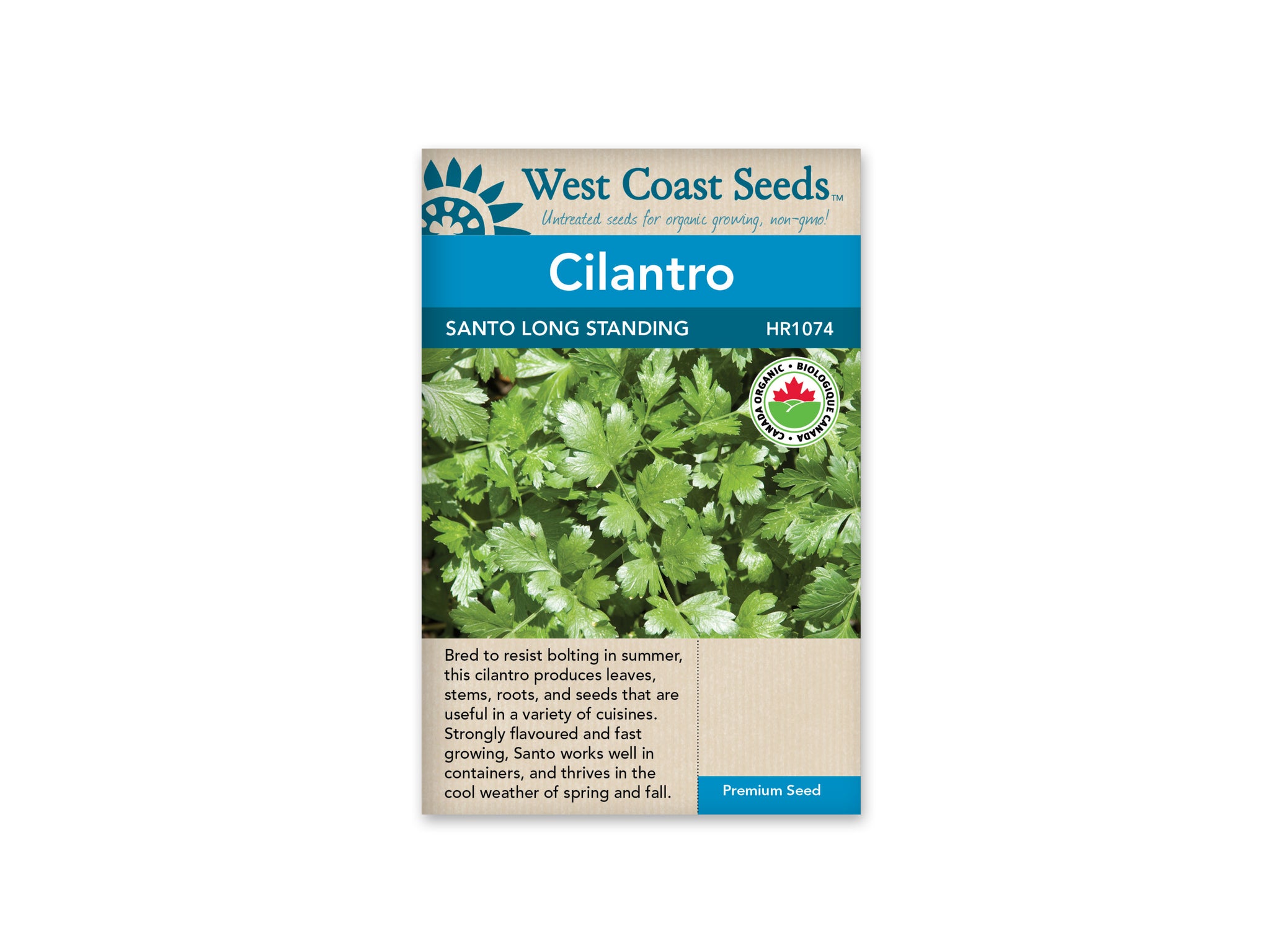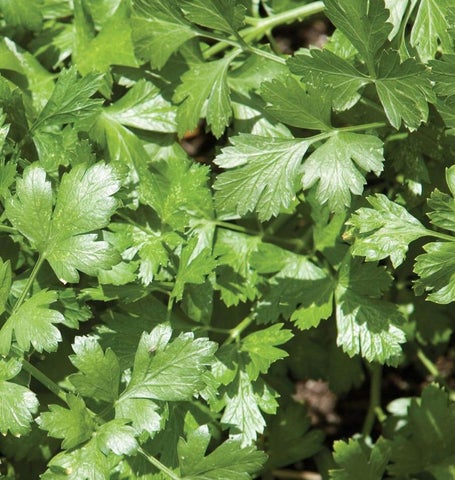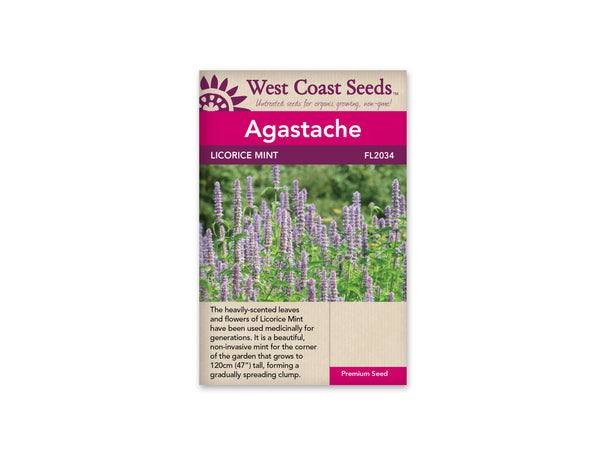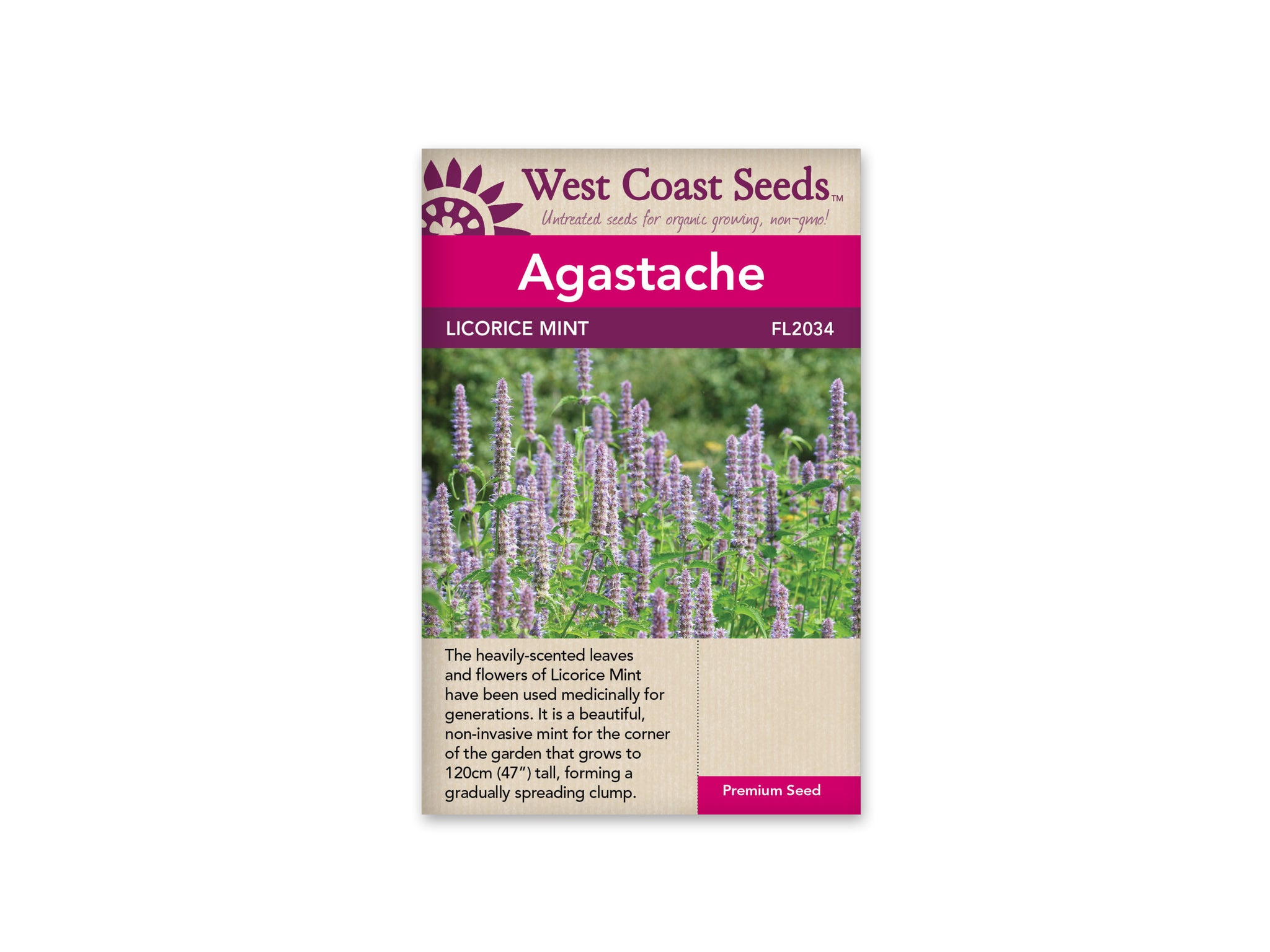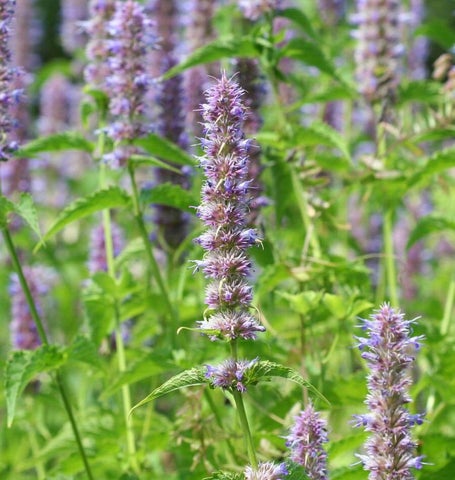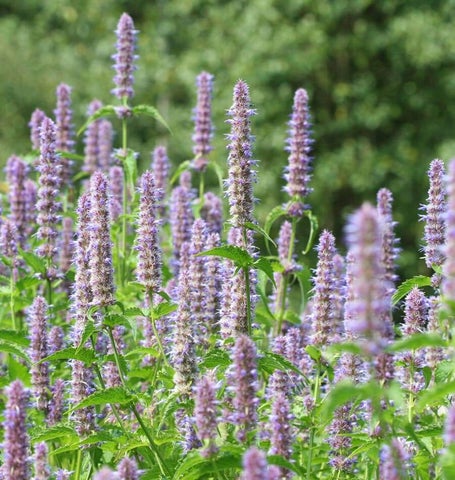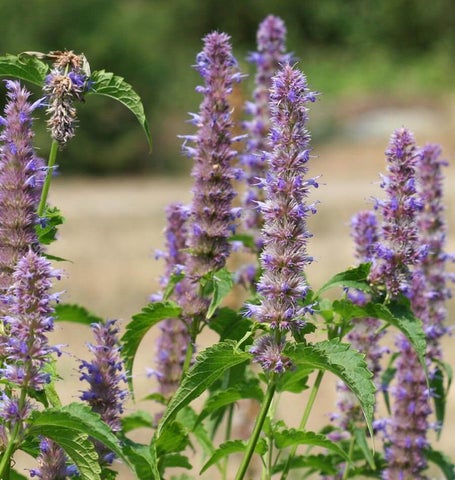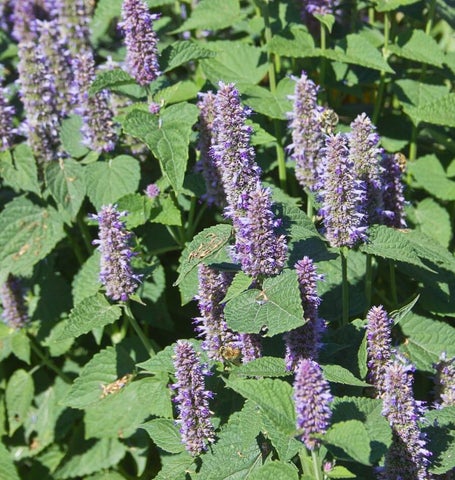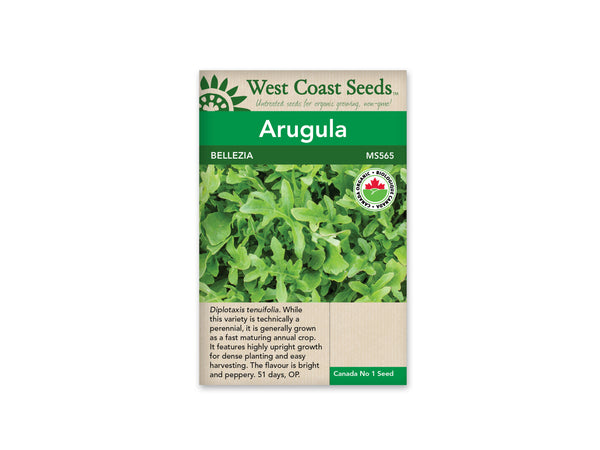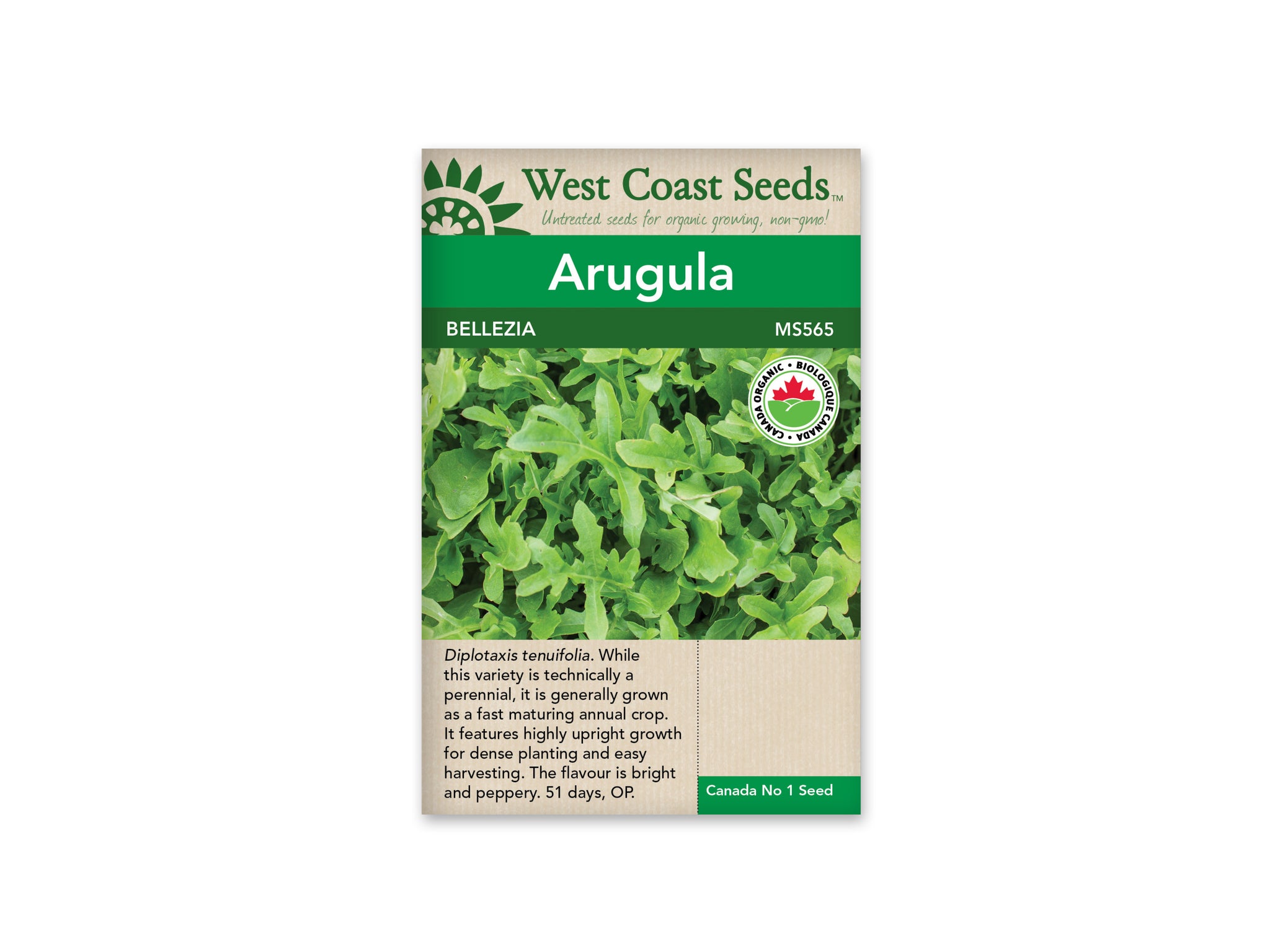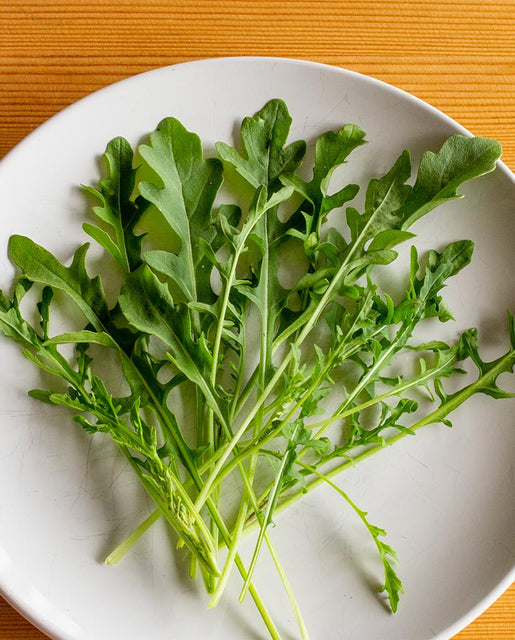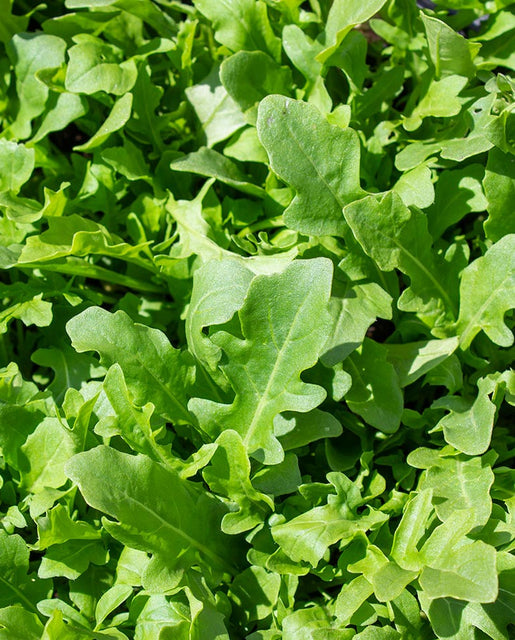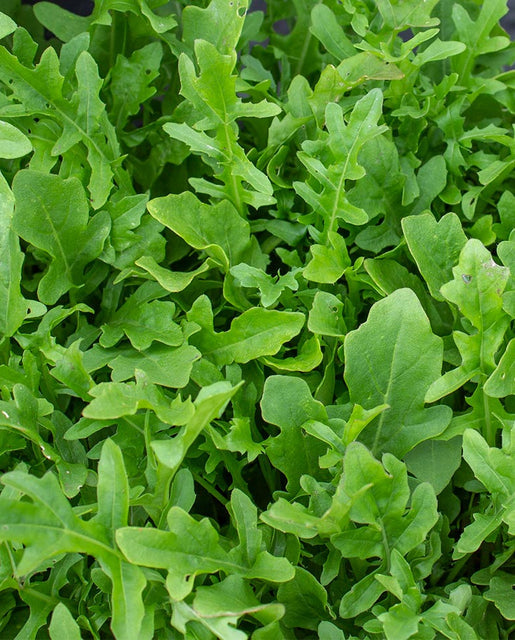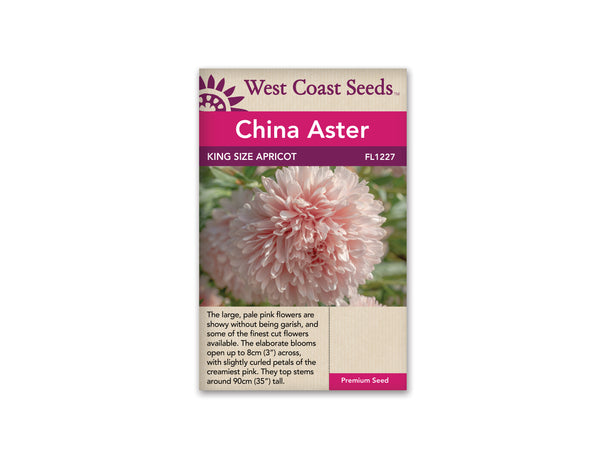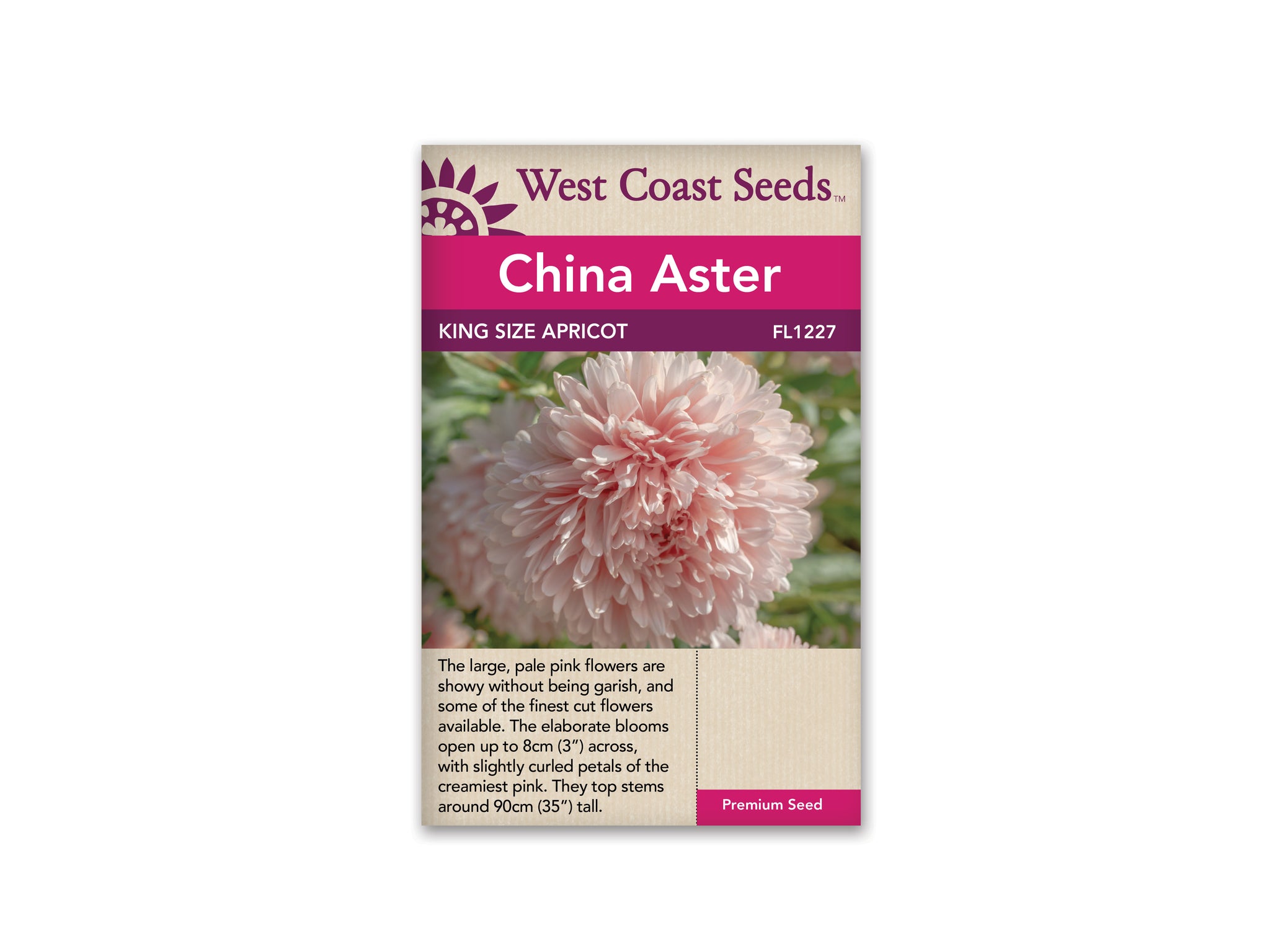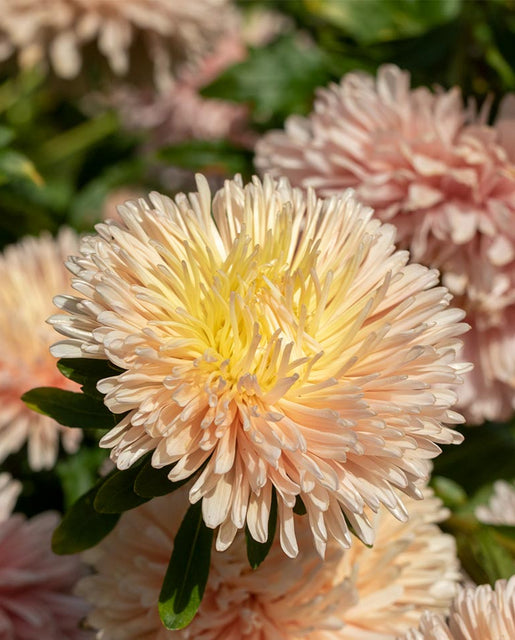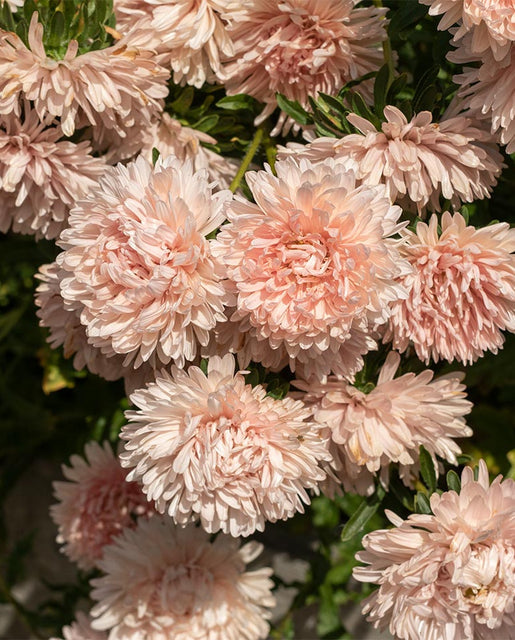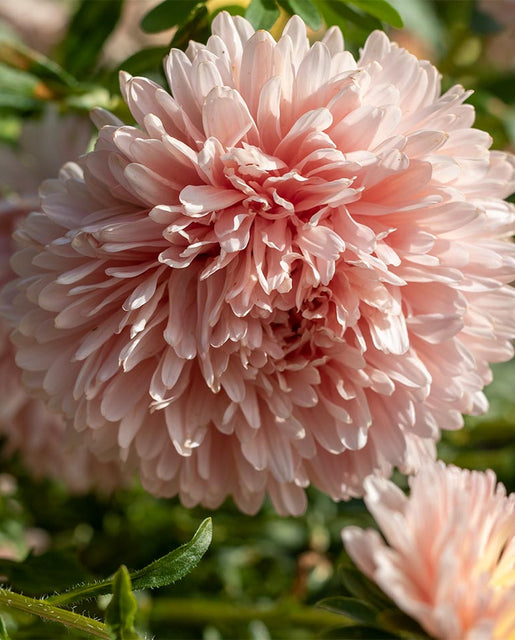Canadian Orders: Flat-Rate Shipping on Orders over $75 | Orders Over $150 Ship Free!
-
Shop
- New Arrivals
- Gardening
- Seeds
- Children + Baby
- Bath + Skin Care
- Baby Toys
- Books
- Puzzles + Games
- Loose Parts + Creative Play
- The Little Naturalist
- Play Chef
- Slings
- Apothecary
- Kids Lunches
- Accessories
- Sustainable Living
- Brushes / Brooms
- Food Storage
- Outdoors
- Coffee, Tea, Chocolate + Honey
- Coffee + Tea Accessories
- Water bottles + Travel Mugs
- Cookbooks
- Dishwashing
- Laundry
- Cleaners
- Accessories
- On The Go Essentials
- Self Care
- Face Care
- Body Care
- Hair Care
- Cosmetics
- Deodorant
- Toothpaste + Oral Care
- Sun Care
- Accessories
- Zero Waste Bathroom
- Soap
- Essential Oils
- For Men
- Books
- Apothecary + Natural Supplements
- Pet Care
- Shop Local
- Bulk
- In Store Pick Up
- Home Improvement
- Paint & Stain
- Discover
- Bulk Bar
Cilantro — Santo Organic
$3.99
Santo Organic cilantro seeds are CERTIFIED ORGANIC! Cilantro "Santo" is bred to be slow bolting. Direct sow short rows of these frost-tolerant plants every other week from spring to late summer for continuous harvest. The mature seeds, better known as coriander, are easy to harvest, and used in many dishes - notably curry powder blends. Keep an eye you your cilantro crop because the flowering process (bolting) is famously quick in this plant. As soon as a central stem appears and the uppermost leaves become frilly, it's time to harvest the whole plant, roots and all. The roots are useful - check out this Coriander Root Paste recipe. Because of this taproot, cilantro does not transplant well.
If growing for seeds, simply allow the plants to flower. Cilantro flowers are highly attractive to beneficial insects like Syrphid flies, lacewings, and lady beetles. Be warned that if the seeds are not harvested when they are mature, you will have volunteer cilantro plants for years to come.
Cilantro will grow somewhat leggy, but productively in partial shade, and it is quite tolerant of cool temperatures. With the protection of a cloche greenhouse, cilantro will continue growing all winter.
Quick Facts:
- Cool season crop
- Mature seeds are known as coriander
- With a bit of cover, it will overwinter
- Grows to 50cm (20")
- Use the leaves, seeds, and roots
- Pollinator
Size: 2g (approx. 170 seeds)
How To Grow: Cilantro is easy to grow and fast to go to seed in summer. The umbel (cluster) of flowers that forms at the top of the plant is highly attractive to beneficial predatory insects. The secret is to give cilantro deep soil for the roots, try placing the plant in partial shade, pick frequently, and resow several times. Continue reading below for some tricks and tips to grow cilantro from seed.
Difficulty
Easy
Season & Zone
Season: Cool season
Exposure: Sun or part-shade
Zone: Will overwinter with protection in Zones 7+
Timing
Direct sow from just after the last frost date to late spring. Direct sow in the fall under cover for a winter crop. Optimal soil temperature for germination: 15°C (60°F). Seeds should sprout in 5-10 days.
Starting
Sow 2cm (1″) deep in short rows. Thin seedlings to stand 5-10cm (2-4″) apart if harvesting leaves. If growing for seed, allow 23cm (9″) between plants.
Growing
Cilantro is tricky because several factors can cause it to bolt. Avoid transplanting for this reason, and avoid hot conditions as well as too much moisture. It does best in light, well-drained soil in partial shade, in relatively dry conditions. This is easy to achieve beneath a cloche in winter, where cilantro will thrive. Once it blooms, the seeds ripen suddenly, in only a couple of days, so care should be taken to prevent self sowing or simply losing those useful seeds.
Harvest
Pick young leaves once they have reached about 10cm (4″) in height. The flavour, though intense when fresh, diminishes quickly when dried or cooked, so always add cilantro just before serving. Try freezing it in ice cube trays with water. The stems and roots are also full of flavour. Harvest the seeds by sticking 6 or 8 seed heads in a paper bag and hanging it up somewhere airy, away from direct sunlight. The bag will catch the seeds as they ripen and fall out.
Seed Info
Usual seed life: 3 years.
Companion Planting
Cilantro repels aphids, potato beetles, and spider mites. It attracts hoverflies and other beneficial predatory insects.
Related Items
Agastache — Licorice Mint
Sold Out $3.49
Agastache foeniculum. With heavily licorice-scented leaves and tall spikes of edible lavender flowers, Licorice Mint has been used medicinally for generations. It also happens to...
View full product detailsArugula, Wild — Selvatica Heirloom Organic
Sold Out $3.69
CERTIFIED ORGANIC! Diplotaxis tenuifolia. While technically this variety is a perennial, growers and home gardeners will probably prefer growing it as a fast maturing annual crop. Bellezia...
View full product detailsAster — King Size Apricot
Sold Out $4.19
Callistephus chinensis. King Size Apricot China Asters are some of the most sensational cut flowers we know of. The large, pale pink flowers are showy without...
View full product detailsSign up to get the latest on sales, new releases and more…
© 2025 Sustain.
Ecommerce Software by Shopify

